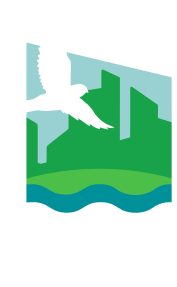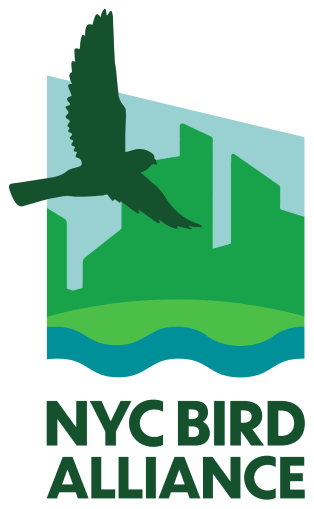Forests and Upland Parks
A Bird’s-Eye View of Central Park. Photo: Stew Dean/CC BY-NC 2.0
As millions of migrating birds fly over New York City in spring and fall, they encounter what must be a bewildering spectacle: an inhospitable landscape of cement, rooftops, and macadam streets. But this vast “gray-scape” is marked, here and there, with inviting shapes of dark green—the City’s forests. NYC Bird Alliance works to protect these critical woodland habitats and encourages bird-friendly forest management throughout the City’s five boroughs.
As any New York City birder knows, migrating birds funnel into our wooded parks in droves. The density and variety of birdlife seen in these leafy oases during migration is matched by few other locales in the temperate world. Tanagers, warblers, and vireos join thrushes, orioles, and grosbeaks in a feeding frenzy. Many of these species are “neotropical” migrants, those that winter in the lush habitats of Central and South America and the Caribbean known as the neotropics.
And these woodland birds are in trouble: according to a study published in the journal Science in 2019, our eastern forest birds have declined 20 percent since 1970—a stunning loss of about 167 million birds. Possible reasons for this decline include habitat loss throughout the birds’ ranges and pesticide use—almost all species are insectivores during at least part of their lifecycles. In addition to this ongoing loss, National Audubon’s Survival by Degrees report indicates that 59 percent of eastern forest birds (and 98 percent of boreal forest birds) are vulnerable due to the coming effects of climate change on their habitats.
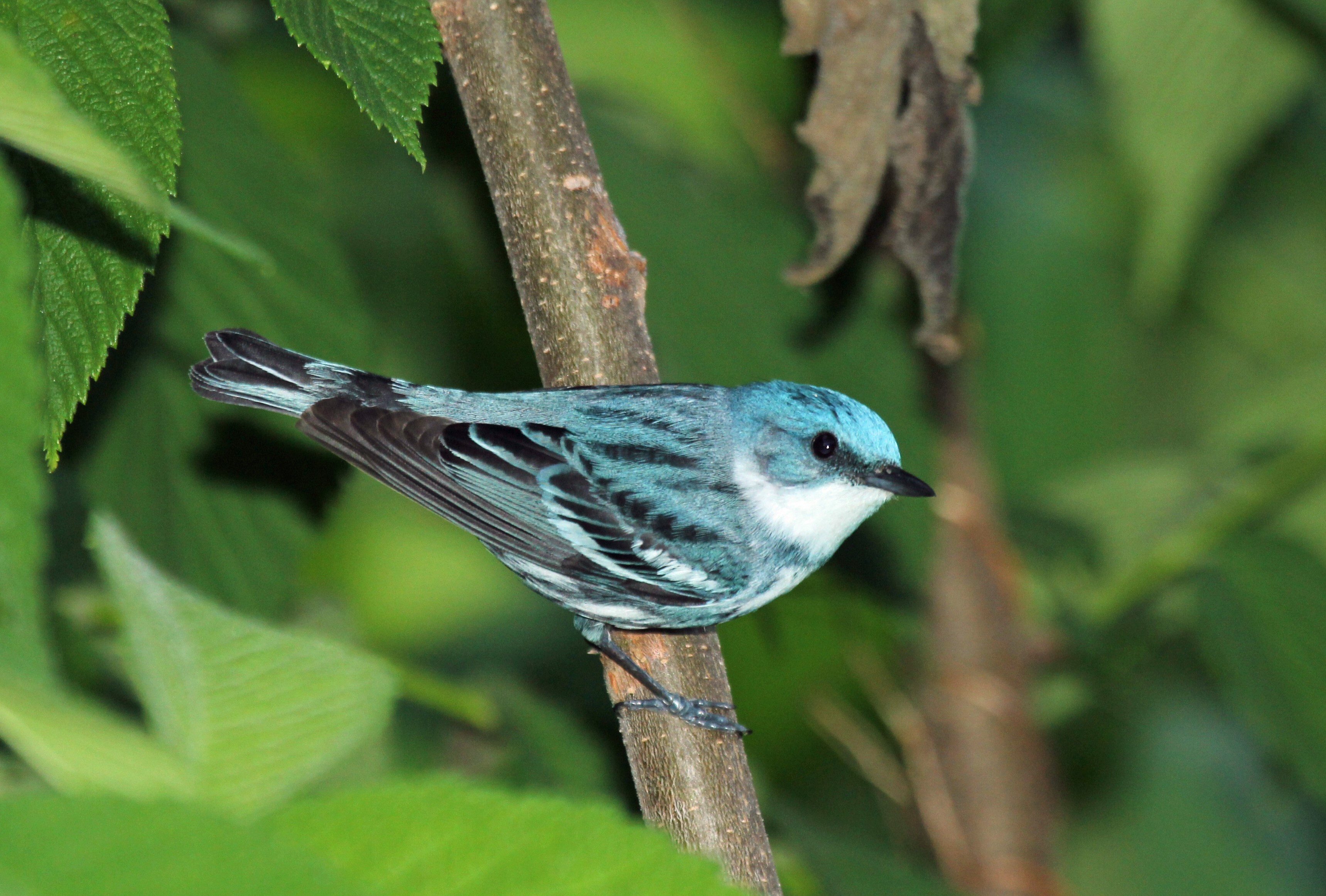
The population of Cerulean Warblers, which nest in older deciduous forests, declined 72 percent between 1970 and 2014, according to Partners in Flight. Photo: Melanie C. Underwood/CC BY-ND 2.0
NYC Provides Critical Stopover Habitat for Migrating Birds
When these songbirds and other land birds reach our city parks, many have often flown huge distances, as much as hundreds of miles at a stretch. And many have hundreds more ahead of them, to reach nesting grounds in the great northern forests of Canada or wintering grounds in the Amazon basin. In order to survive these arduous journeys and maintain healthy populations in the face of declining numbers and mounting environmental challenges, it is imperative they find safe harbor and sustenance when they stop along the way.
This stopover represents the greatest ecological value of our city forests to birdlife: a place for migrants to rest and refuel. (And as we enrich our forests, breeding bird diversity increases as well.) In this light, NYC Bird Alliance works to preserve and enrich tracts of forest and wooded parks.
A few large, largely or partly wooded habitats exist in each borough of the City:
- Prospect Park and Green-Wood Cemetery in Brooklyn
- Pelham Bay Park, Van Cortlandt Park, and The New York Botanical Garden in the Bronx
- Central Park and Inwood Hill Park in Manhattan
- Forest Park and Alley Pond in Queens, as well as the connected “necklace” of parks in between them
- The Greenbelt, Clove Lakes Park, and Mount Loretto State Forest in Staten Island.
Each borough also contains a variety of smaller spaces, including wooded waterside parks, arboretum-like cemeteries, and “pocket” parks surrounded by skyscrapers. Even small patches of trees can provide important stopover habitat during migration.
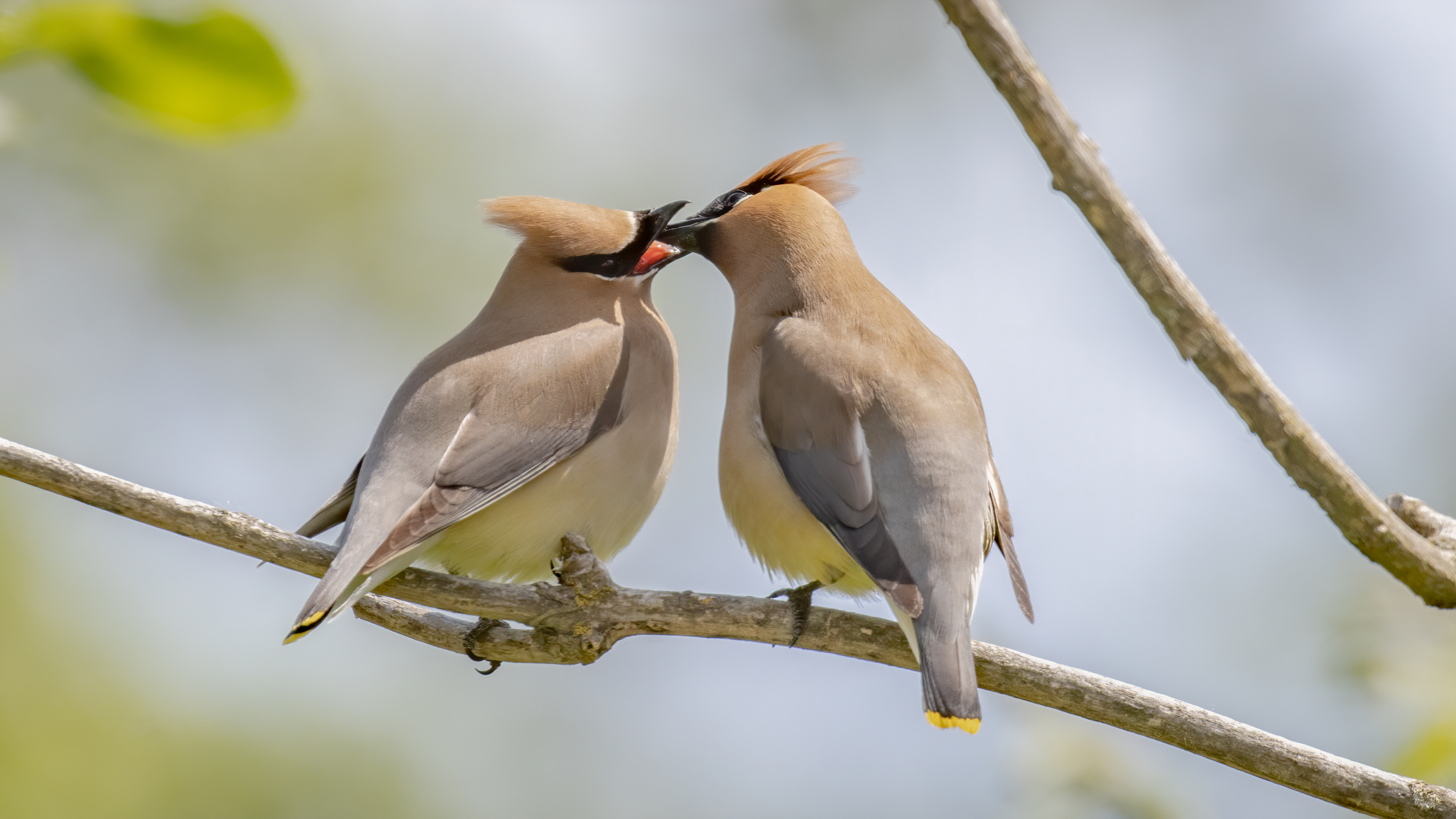
Cedar Waxwings breed across New York City, though they often go unnoticed. Photo: Eric Ellingson/CC BY-NC-ND 2.0
NYC Forests and Parks: Home to Breeding Birds
Though many species only stop through the City during migration and move on, a surprising variety of species also breed in the City’s larger forests—including Great Horned and Screech Owl, Hairy and Pileated Woodpecker (confirmed breeding on Staten Island in 2020, by Breeding Bird Atlas volunteers), Cooper’s Hawk—and passerines such as Great Crested Flycatcher, Warbling and Red-eyed Vireos, Wood Thrush, Blue-gray Gnatcatcher, Cedar Waxwing, American Redstart, Baltimore and Orchard Orioles, and even Scarlet Tanager (also confirmed breeding in 2020). These breeding birds benefit from the same bird-friendly forest management practices that benefit migrants. Learn more about the New York State Breeding Bird Atlas III.
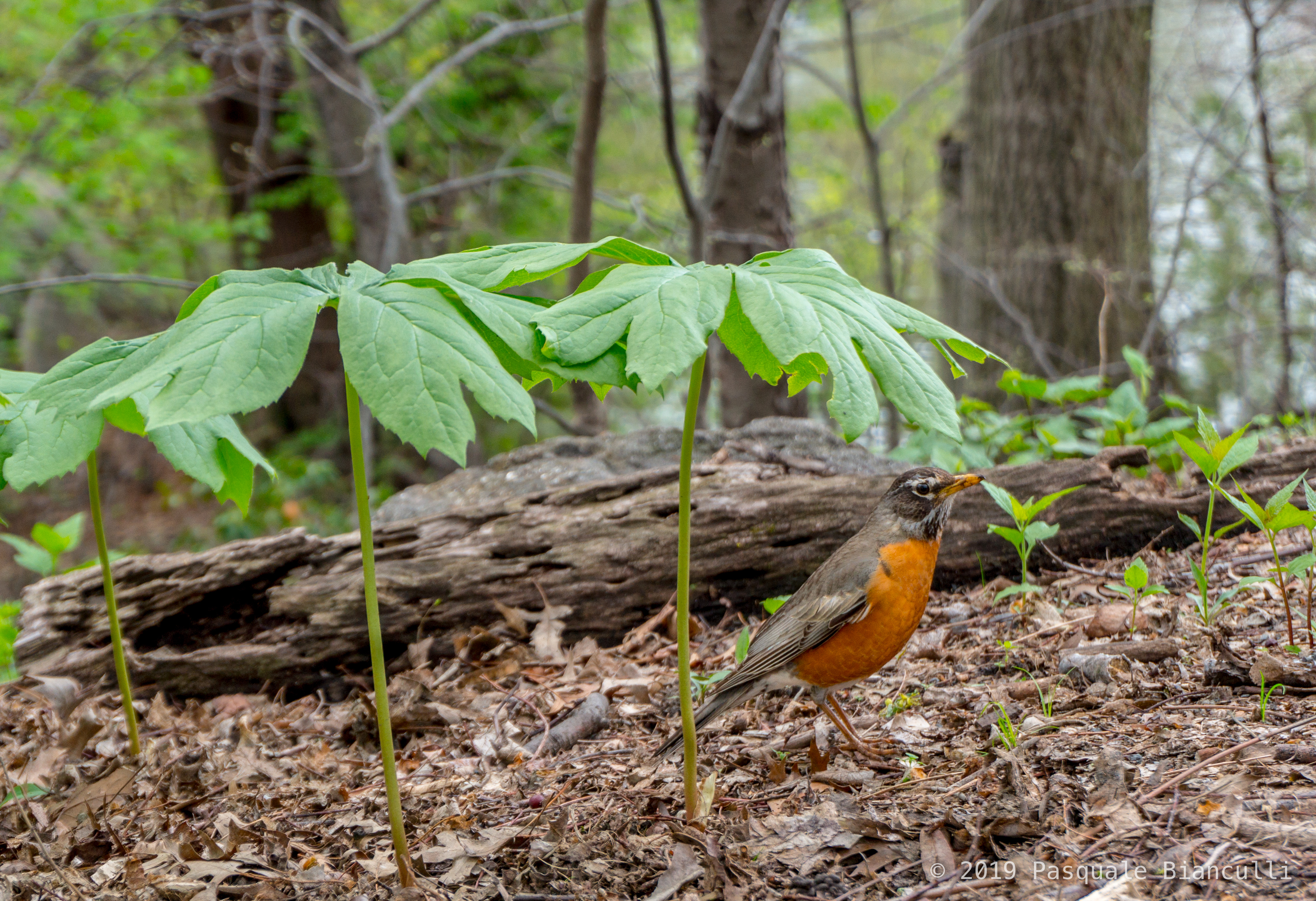
Thrushes like the American Robin (shown here under a native Mayapple) benefit from a natural ground layer rich with invertebrates. Photo: Pat Bianculli/CC BY-ND 2.0
Bird-Friendly Forest Management
Forests and wooded parks should be managed to include a rich variety of native plants, which host the native insects that birds need during migration and to feed their young, and which provide rich fruit and nuts to fuel long migration flights and sustain birds over the winter. Ongoing maintenance is required to minimize the presence of invasive, non-native plant species, which requires adequate funding for park habitat management over time. Read more about the importance of native plants for birds.
Our park forests, and even more manicured parks with trees, should be managed to include rich, “natural” layers of habitat—including an over-story of canopy trees, a mid-story of small trees and shrubs, and an understory of herbaceous plants. All of these layers may include both native-insect-host plants and fruit and nut-bearing species. Dead trees and snags should be left whenever possible to provide nesting sites for cavity-nesting birds like woodpeckers, Great-crested Flycatcher, chickadees, titmice, and nuthatches.
Just as important—and often neglected—is the ground layer, which is best for birds and other wildlife when allowed to accumulate a rich layer of fallen leaves and branches. This ground layer provides habitat for many of the insects that birds eat, particularly the moth caterpillars that songbirds feed to their chicks: at the end of the caterpillar stage, most moth caterpillars drop to the forest floor and burrow into the soil, where they metamorphose via the pupa stage into winged moths.
Bird-friendly forest management also involves minimal use of chemical pesticides that kill the insects upon which birds depend—and that may travel up the food chain when ingested, reducing reproductive success and harming birds in other ways scientists are just beginning to understand1.
Finally, forests, like any other habitat, are best for birds when disturbance by humans and their domestic companions, dogs and cats, is kept to a minimum. Well-defined pathways and fencing may help maintain areas where ground-foraging birds are undisturbed. The Parks department must be encouraged to apply resources and assign Urban Park Rangers and Parks Enforcement Patrol officers strategically as stewards to remind park-goers with pets of the rules regarding off-leash dogs—and to issue citations and fines when necessary. The public must also demand a bird-friendly and humane policy regarding feral cats. Learn more about the danger that domestic and feral cats pose for birds.
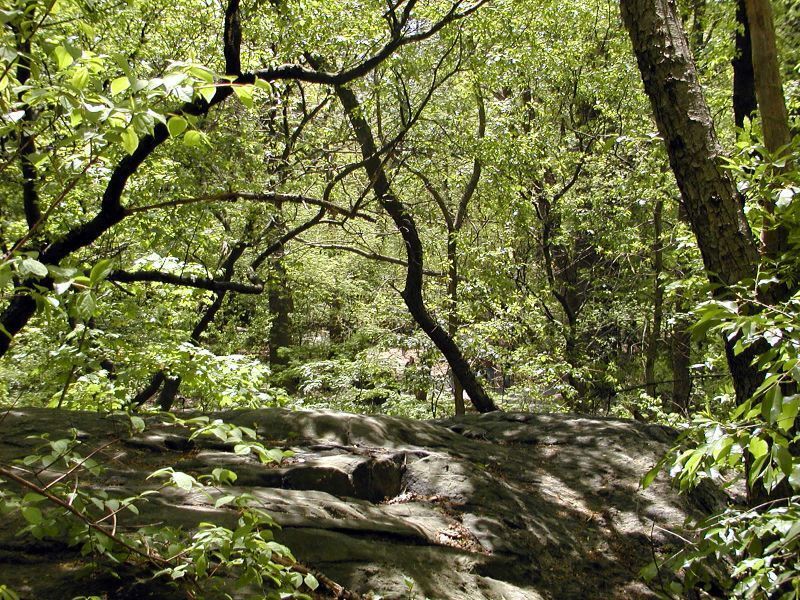
The boulder-strewn woods of the Central Park Ramble. Photo: B.D.’s world/CC BY-SA 2.0
NYC Bird Alliance Works to Protect and Enrich City Forests
NYC Bird Alliance conducts collaborative advocacy to preserve and protect wild spaces in the City and advocate for bird-friendly management of City woodlands. We also take part in native plant restoration projects including plantings and bird species monitoring.
The Central Park Ramble, Manhattan
One of NYC Bird Alliance’s first efforts was to protect forest habitat in the Central Park Ramble. From 1978 to 1982, a cadre of regular Central Park birders including founders Sheila and Lew Rosenberg successfully opposed a Central Park Conservancy plan to “restore” the Ramble through changes such as tree removal.
A report they prepared, Birding Areas in the Ramble, determined that implementation of the conservancy’s plan would diminish bird habitat. NYC Bird Alliance appeared before relevant community boards in opposition to the plan, and in the end, the plan was altered to be more bird-friendly. The young chapter’s actions were prominently covered in The New York Times. NYC Bird Alliance then participated in forming the Central Park Woodlands Advisory Board, which continues to provide naturalist input on park planning.
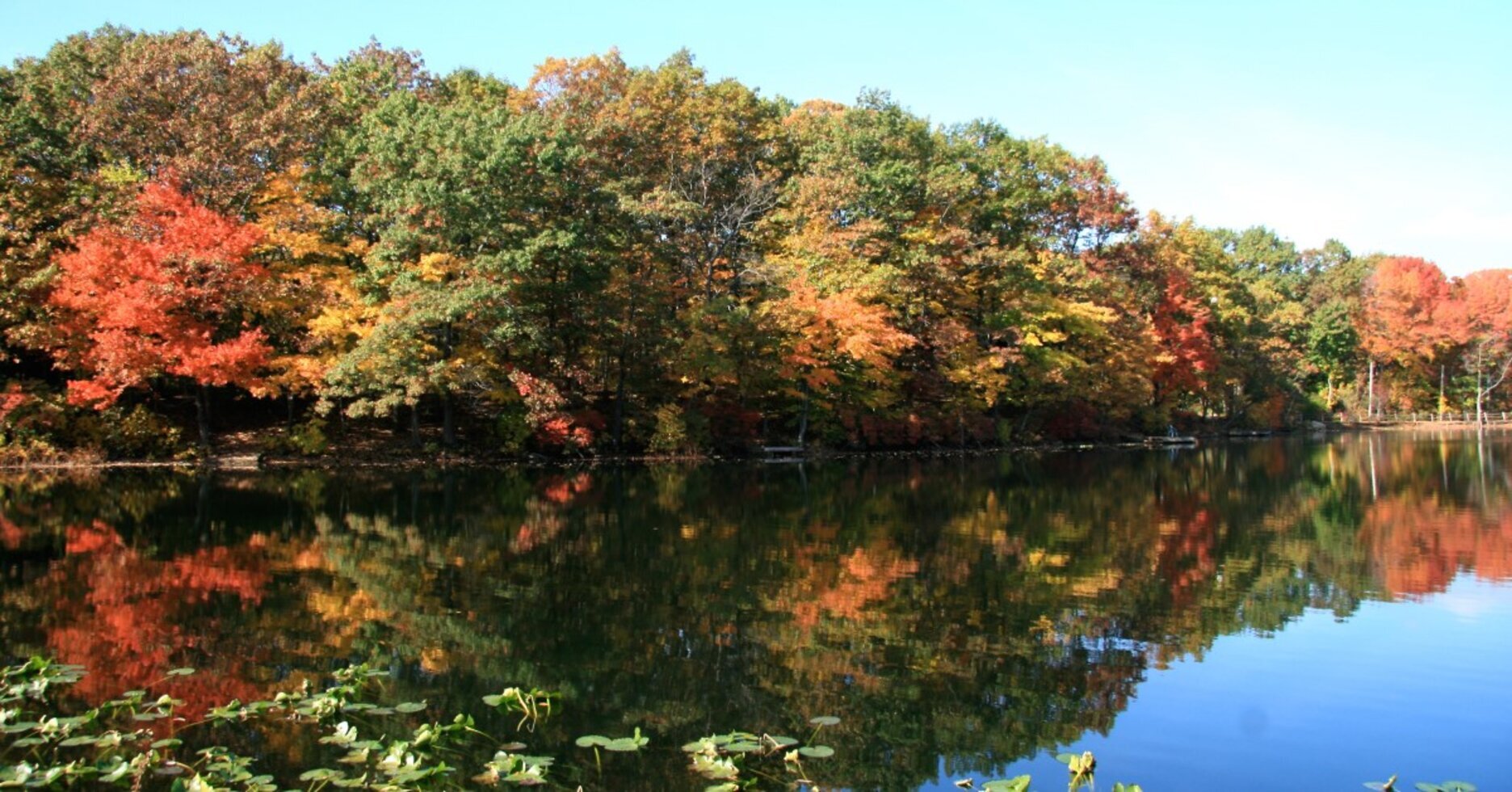
Lake Ohrbach, on the now-preserved William H. Pouch Scout Camp property. Photo: Dorothy Reilly, Greenbelt Conservancy
STATEN ISLAND GREENBELT AND POUCH CAMP
As the least developed of the five boroughs of New York City, Staten Island supports the City’s most diverse plant and animal life. Until the middle of the twentieth century, parts of Staten Island had an almost rural feel; current residents can recall a time when children could bicycle across the island and swim in its creeks.
The opening of the Verrazano Bridge in 1964 unleashed a wave of development that continues to this day. But a great deal of the island’s natural wooded landscape has been preserved through concerted and determined efforts over many decades. Local Staten Island conservation groups such as SIGNAL and Protectors of Pine Oak Woods led the way, aided by city and state agencies, national organizations such as the Trust for Public Land, and advocacy support by citywide conservation groups including NYC Bird Alliance.
The “crown jewel” of Staten Island is its 2,800-acre Greenbelt, a nearly contiguous loop of woodlands, parks, golf courses, and other protected lands. The Greenbelt’s preserved natural spaces include High Rock Park, Willowbrook Park, and the William T. Davis Wildlife Refuge, the first wildlife and bird sanctuary founded in New York City. Several key parcels have remained privately owned and at risk of development, however.
A relatively recent victory was the preservation of the William H. Pouch Scout Camp. Right in the middle of the Greenbelt, Pouch Camp supports wonderfully diverse flora and fauna. The camp and the surrounding Greenbelt are absolutely vital to the Atlantic Flyway migration route. The spring migration at Pouch Camp may yield such bird species as Rose-breasted Grosbeaks, Scarlet Tanagers, kinglets, Ovenbirds and numerous warblers, among others. The camp's freshwater ponds support several species of amphibians, such as Spring Peepers, Fowler's Toad, Northern Red-backed Salamander, and Red-spotted Newt. One hundred of North America's 760 species of butterflies can be found in Staten Island; surely many of them find refuge at Pouch Camp.
In 2009, towards the end of the Great Recession, the owner of the Pouch Camp property, the Greater New York Councils of the Boy Scouts of America (GNYC), announced that the property might be sold out of financial necessity. GNYC hoped to find some way to preserve the land, however, and collaborative advocacy by several dozen local groups supported a solution that would prevent development.
Over the next few years, The Trust for Public Land brokered a conservation easement agreement ultimately funded by the New York State Department of Environmental Conservation and the Port Authority of New York and New Jersey via the Harbor Estuary program, with additional funds provided by the offices of Borough President James Molinaro and Staten Island City Councilmen James Oddo and Vincent Ignizio. A total of 94 wooded acres of Pouch Camp are now protected in perpetuity, a great victory for wildlife habitat in New York City.

Ridgewood Reservoir. Photo: Glenn Phillips
RIDGEWOOD RESERVOIR, BROOKLYN AND QUEENS
Ridgewood Reservoir is an accidental wilderness tucked alongside the Jackie Robinson Parkway on the Brooklyn-Queens border. Built in 1858 to provide drinking water to Brooklyn, the reservoir (comprised of three basins) was abandoned in 1989. In the 30 years since, the 50 acres reverted to wetlands, meadows, and forests, offering what one naturalist sees as a “unique opportunity to study the process of forest succession in an urban environment.” One of the wildest places in all of New York City, it is home to a broad diversity of plants (over 180 species), insects, reptiles, and animals including over 170 species of birds, according to eBird.
In 2018, the nearly 30 acres of wetlands at Ridgewood Reservoir were protected under New York State’s Freshwater Wetlands Act. This hard-won victory was the result of more than a decade of dedicated activism by local groups including the Highland Park-Ridgewood Reservoir Alliance, Brooklyn and Queens County Bird Clubs, Newtown Historical Society, Riverkeeper, NYC Park Advocates, NYC H2O—and allies at Queens Community Board 5, NYC Parks, and other local and state government officials.
Artist Jennifer Monson and Brooklyn conservationists Rob Jett, Heidi Steiner, Mickey Cohen, former NYC Bird Alliance Board Member Steve Nanz, and NYC Bird Alliance Board Vice President Rob Bate were critical to this fight. NYC Bird Alliance supported the effort through advocacy and local partnerships. Learn about birding Ridgewood Reservoir.
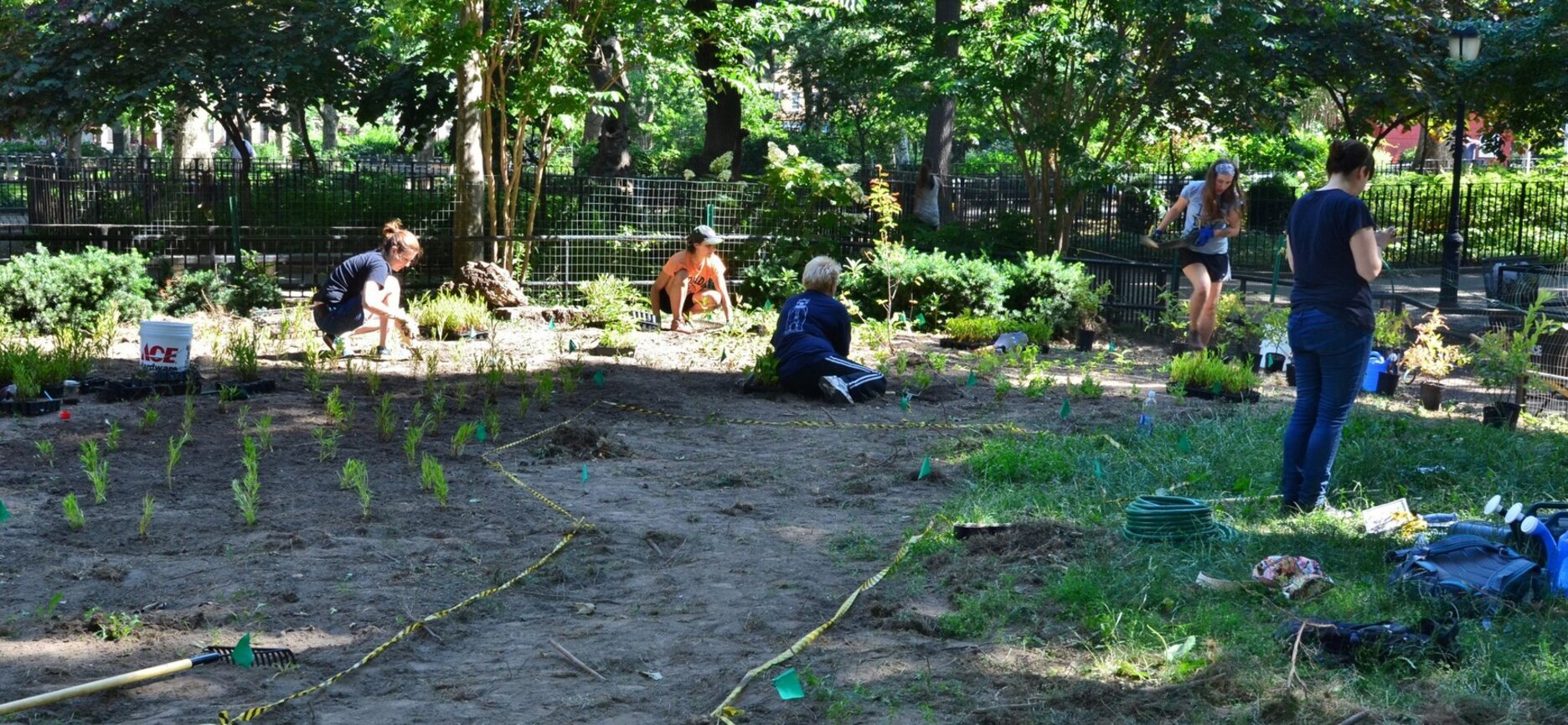
NYC Bird Alliance volunteers and staff lay out a native plant garden in McGolrick Park, Brooklyn. Photo: Chris Kreussling
Community-Based Stopovers: McGolrick Park, Brooklyn
While preservation of large tracts of forest is fundamental to providing adequate stopover and breeding habitat for woodland birds, even small parks may be enriched for birds. Such small stopovers may provide critical resources for tired and hungry migrating songbirds—and also create a connection to nature and birds for people in neighborhoods often lacking in greenspace.
McGolrick Park, in Greenpoint, Brooklyn, is an example of a successful project of this kind. One of very few green spaces in this industrial section of the borough, McGolrick Park is a nine-acre City park, consisting of sparse lawns, some cultivated gardens, and a dog run. From 2014 to 2016, thanks to a generous grant from the Greenpoint Community Environmental Fund, NYC Bird Alliance and local residents created a 0.25-acre native plant garden to provide high-quality stopover habitat for migrating birds.
Native plants were carefully selected to provide cover and food sources for birds throughout the year; species chosen include Lowbush Blueberry, Canadian Serviceberry, Joe-Pye Weed, Gray Goldenrod, and Common Milkweed. In total, more than 4,000 plants were planted by dozens of NYC Bird Alliance volunteers.
Volunteers from the Greenpoint community also assisted NYC Bird Alliance staff in conducting bird, bat, and arthropod surveys throughout the park, in order to involve the community in adding observations to the eBird database and encourage park stewardship. Survey volunteers observed 34 species in the park during six different bird surveys throughout the year. Nineteen of these species had not previously been recorded in the park, among them Blackpoll Warbler, Cedar Waxwing, and Scarlet Tanager.
Read more about the McGolrick Park project. In 2016, the Horticultural Society of New York took over management of the native plantings in McGolrick Park; read more about the current gardens (PDF).
Citations
- Arya, A.K., Singh, A. and Bhatt, D., 2019. Pesticide applications in agriculture and their effects on birds: an overview. Contaminants in agriculture and environment: health risks and remediation, 5(10).
